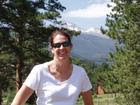I like this session because I left my computer at the hotel on Sunday (because we were going to the National Gallery of Art later in the afternoon) and had to take notes on a very small piece of paper and that gave me time to think. Actually, I hadn’t planned to take notes at all but apparently I’m physically incapable of not writing down the interesting things that I hear. Anyway…
The presenters were Cindy Cunningham who is Director of Media Metadata and Cataloging at Corbis Corp.., Danuta Nitecki who is Associate University Librarian at
There are several characteristics of visual images that make them more complex to seek and find. First is ownership; copyright of a visual image is often held by multiple entities including (using a photograph of an artwork as an example) the artist, the owner of the artwork, and the photographer. The second complexity is in making images accessible (e.g. cataloging them) because of the subjective nature of interpreting the symbols represented in an image; much more subjective than the interpretation of text for which we have much greater consensus on meaning.
How’s this for a great job? At Corbis there is a team of people who scan the media (newspapers, TV, etc.) for trends and then they search for images that have some meaning or representation for the trend AND as many words as they can come up with to describe them…including making up words!
They shared a couple of web site URLs with us as examples of trends in photographic images:
http://www.ted.com/index.php/talks/view/id/129
http://www.video.google.com/videoplay?docid=824643990976635143
Then they asked, so what is visual literacy and why do we need to describe it? The answer is
- to gauge student development
- to evaluate teaching effectiveness
- to measure people’s ability to use them (visual images)
The problem is that there are no standards to describe what the “right”, “necessary” level of visual literacy is. Danuta Nitecki presented a rubric that they have developed as a potential standard (FMI see ). The disadvantage to their rubric is that it doesn’t address or measure the ability to find images.
Cindy Cunningham mentioned that there are studies about image seeking. That made me wonder whether any of the methods and frameworks that have been applied to (textual) information seeking having been applied to image seeking (e.g. Lynne Westbrook’s mental models or learning theory). It reminded me of my first year in library school when I was so interested in researching the availability of visual images on the web, in particular art images.


No comments:
Post a Comment